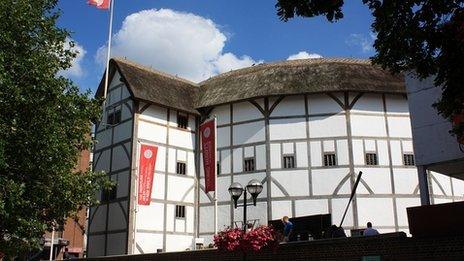Shakespeare's 'original classroom' revealed
- Published

The young Shakespeare would have had his school lessons and seen his first plays in this room
The original classroom where William Shakespeare is believed to have studied and seen his first plays opens to the public for the first time this weekend.
The classroom is owned by the King Edward VI school, the direct successor to the grammar school in Stratford-upon-Avon attended by Shakespeare from about 1571.
It will be open to visitors after a £1.8m lottery-funded renovation.
Among the discoveries was a hidden pre-Reformation wall painting.
Bennet Carr, headmaster of the modern day grammar school, says of the atmospheric building: "If I'm on my own in there sometimes, the hairs stand on the back of my neck."
His school is now going to share the classroom with visitors, with the renovated building opening on Saturday, the 400th anniversary of Shakespeare's death.
The schoolroom where Shakespeare studied from the age of seven was the upper floor of the town's half-timbered medieval guildhall.
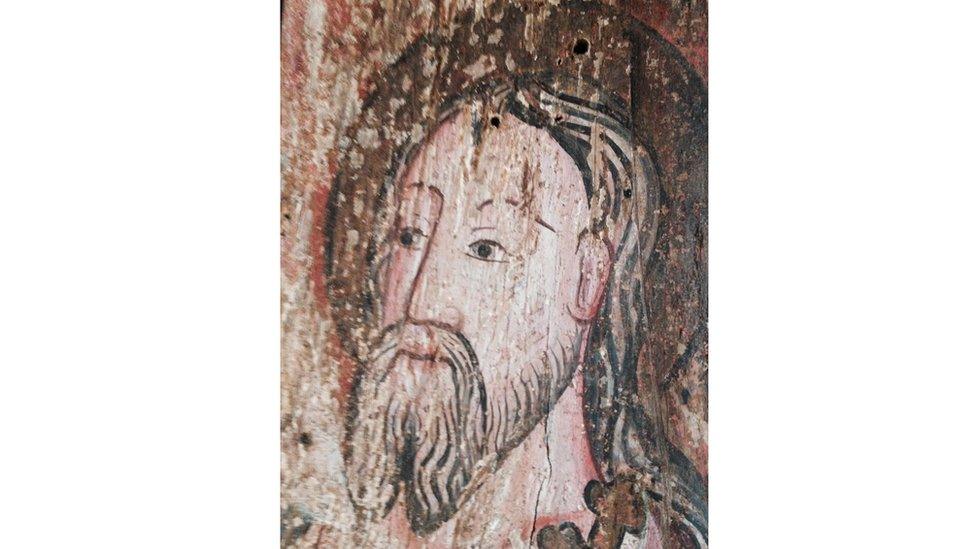
A medieval painting of John the Baptist on the Guildhall wall was discovered during renovations
There are no surviving records of the pupils who attended in the 16th Century.
But Prof Ronnie Mulryne of Warwick University says it is almost certain that this was Shakespeare's school, until about the age of 14 or 15.
William's father John Shakespeare, a businessman and member of the local council, would have worked in the offices below the schoolroom.
There would have been 40 boys, from the age of seven to 15, all taught together in the same room by a single teacher. They sat on long wooden benches, called "forms" for school days that stretched from 6am to 6pm.
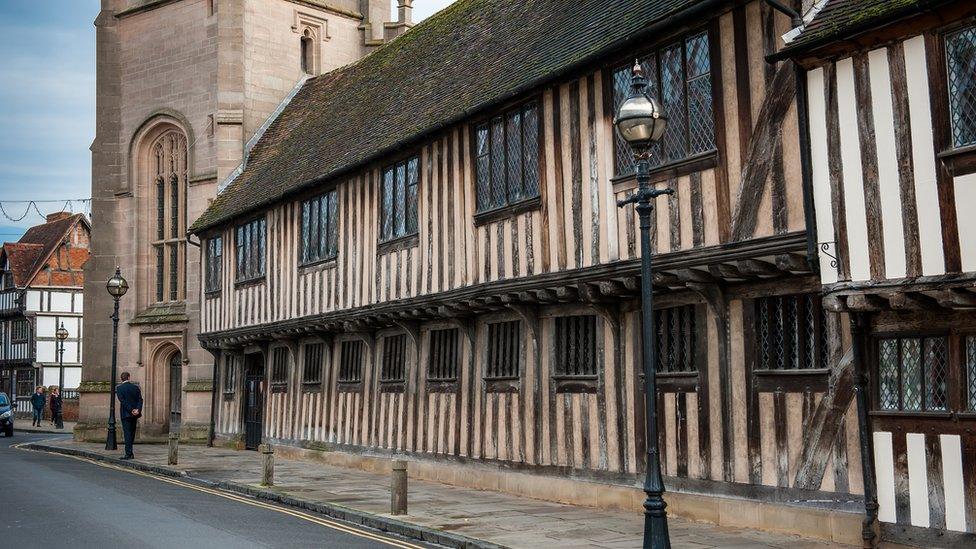
Pupils were taught in the upper room of the medieval guildhall building
This was a classical education, with a strong emphasis on Latin and rote learning, and it was where he first encountered writers such as Ovid, who would later be influential in his work.
Shakespeare didn't go to university and all his formal education would have been in this single room.
This classroom, under big wooden ceiling beams, has another claim to fame. It was where Shakespeare probably saw his very first play.
Travelling players visiting the town had to perform before the local authorities, before they would be licensed to appear before the public.
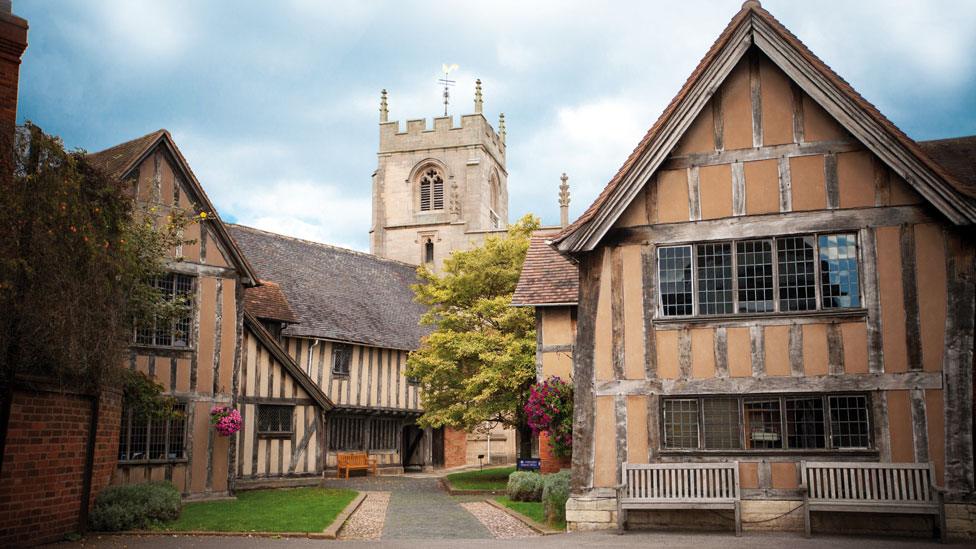
The old schoolroom and guildhall are still part of the school campus
The schoolroom was the venue for these private performances and Prof Mulryne says William would have attended with his father, who was part of the invited audience.
"It's hardly conceivable that he wouldn't have taken an opportunity to see the plays," says Prof Mulryne.
Among the plays presented were King Leir - an early version of the story that Shakespeare would write as King Lear - and Henry V.
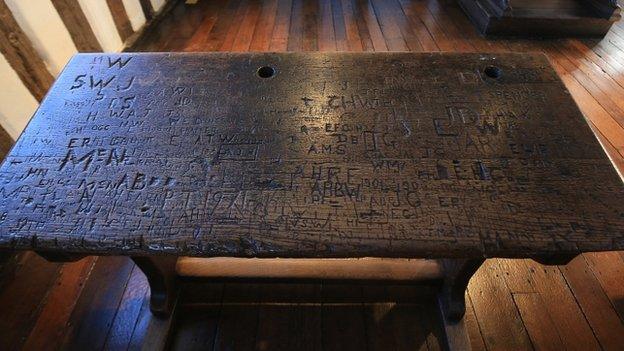
A heavily initialled 18th Century desk: The room has been used for lessons for centuries
Prof Mulryne says these performers, arriving with drums, trumpets and costumes, must have made a huge impression - and this would have been Shakespeare's first contact with professional actors.
The guildhall, built in 1420, was named after a religious foundation - the Guild of the Holy Cross.
The guild was closed in the Reformation in the 1540s, but Prof Mulryne says it seemed to have "morphed" seamlessly into the new town council, based in the same building, with much the same people and keeping its upstairs school.
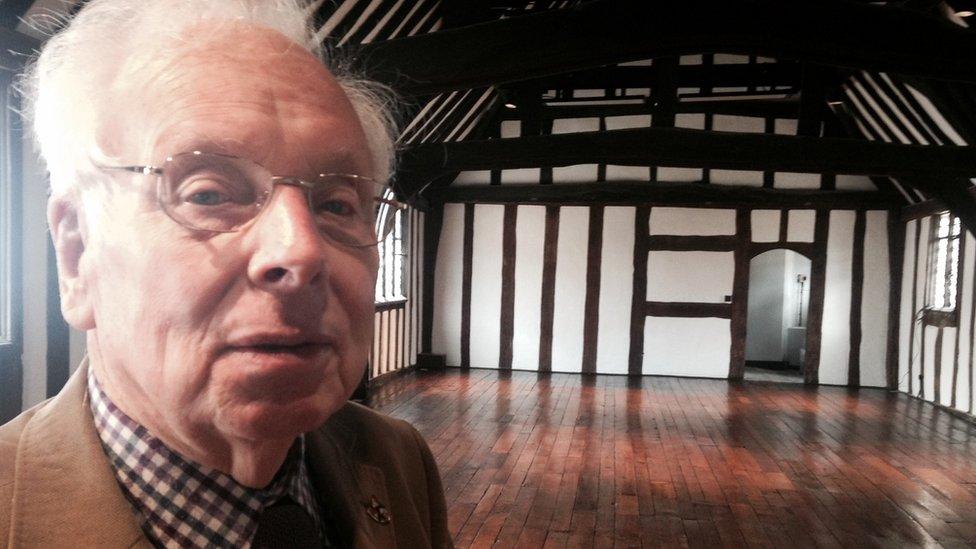
Prof Ronnie Mulryne says this is where Shakespeare's world view was first formed
Under the new religious order, the medieval wall paintings in churches had to be removed as symbols of the old Catholic faith. Shakespeare's father was paid to "deface" the richly-coloured decorations in the guild chapel next door.
But it's open to debate whether he was trying to erase or preserve these works of religious art, because rather than destroy them they were concealed with a covering of limewash.
This also happened to an altar painting in the guildhall - and one of the biggest discoveries during the restoration was finding a well-preserved picture of John the Baptist, painted almost 600 years ago.
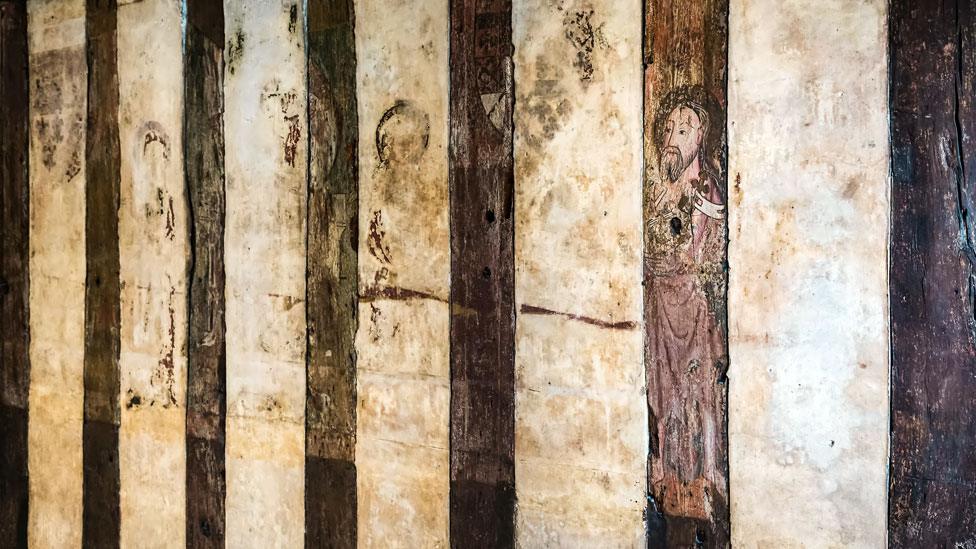
The restoration found a private altar in the guildhall, covered over in the Restoration
Such religious disputes were much more than cultural differences, it was a turbulent time of violence and political danger. And the schoolroom's story shows how closely a young Shakespeare was surrounded by the Tudor politics of religion.
While Shakespeare's own beliefs remain a matter of academic debate, it's clear that his teachers had strong links to the outlawed Catholic tradition.
Simon Hunt, who would have been Shakespeare's first teacher, left the school to become a Jesuit priest. His successors Thomas Jenkins and John Cottom also both had strong Catholic associations.
Cottom had a brother who was a priest who was executed in London, a year or so after Shakespeare had left school. In a small community, such stories must have caused shockwaves.
If there is any substance to the theory that Shakespeare spent time as a teacher in Lancashire, that also stemmed from the Cottoms, who were connected to the Hoghton family where a William Shakeshaft was recorded in the early 1580s.
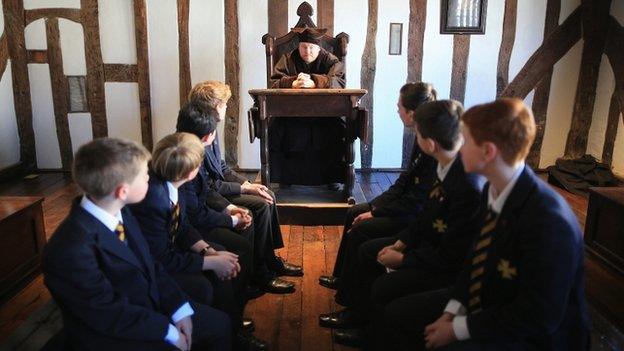
Modern pupils from the King Edward VI school on the type of benches used by Tudor pupils
Prof Mulryne says the school and guildhall help to put Shakespeare's background into its actual historical setting.
And it shows his early influences, including his "rather vivid, technicolour" father.
As well as being a successful entrepreneur and local worthy, John Shakespeare was also in the dock in this same building, facing charges for assault and for leaving a muck heap outside his door.
The young Shakespeare would have studied Latin plays upstairs and seen the drama of real-life courts and local politics downstairs.
"It gives us a much greater sense of what life was like for the young William Shakespeare," says Prof Mulryne.
"It builds a picture of how his mind was formed."

Shakespeare: England's greatest storyteller
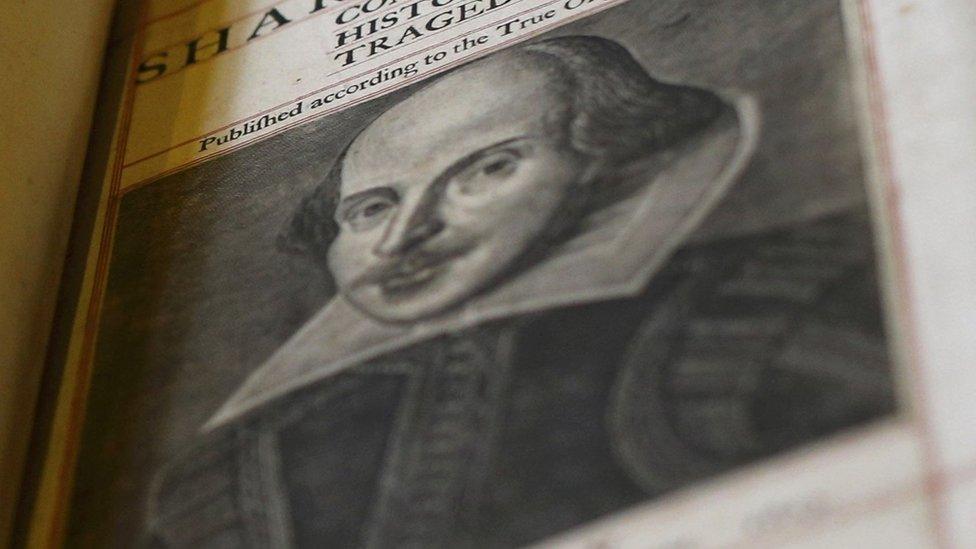
Born in 1564, and the earliest record of his writing dates from 1592
Wrote around 38 full plays including Romeo and Juliet, A Midsummer Night's Dream, Hamlet, King Lear and Macbeth
Words including "assassination", "addiction", "generous" and "bedroom" had their first recorded uses in his plays
Introduced phrases like "elbow room", "heart of gold" and "tower of strength" to the English language
Acted as well as wrote, and owned a share in the original Globe theatre
Died on 23 April 1616, aged 52

Discover more about Shakespeare
- Published7 April 2016
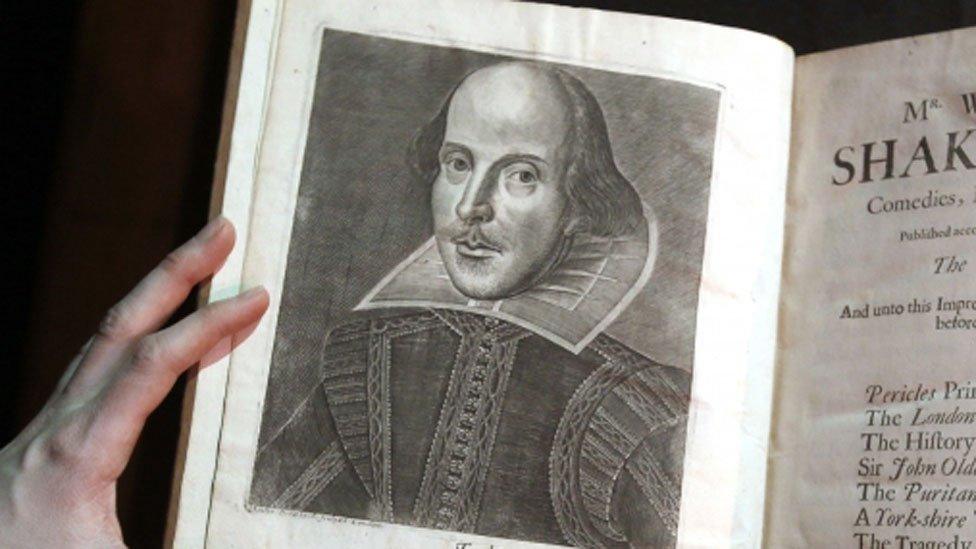
- Published20 April 2016

- Published8 May 2013
